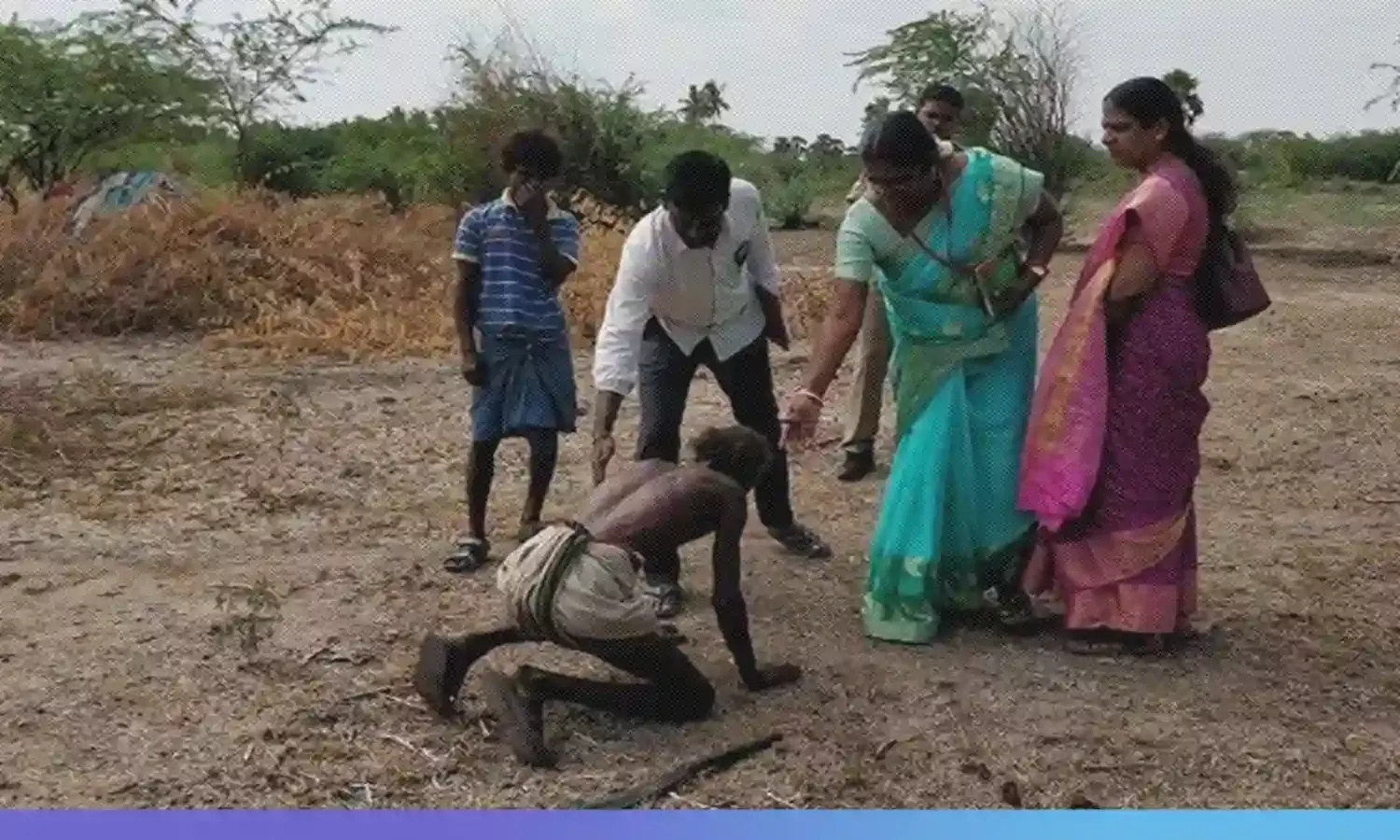Casteist Slavery: 'I Was Made to Sleep With Cattle for Three Years'
There are an estimated 50 crore 'bonded labourers' in India

NEW DELHI: At the mere age of 16, Simon, who is now 18, had realised that his father could barely eke out a living, and the attitude “Being the eldest son, I have to be the financial aid of my family” had already taken shape in his mind.
Simon, a Gond Adivasi, hails from Golaghat, Assam.
Four days ago on the evening of January 14 he was rescued by associates from the Human Rights Law Network and the National Campaign Committee for the Eradication of Bonded Labour along with administration officials in Patiala, Punjab, where he had been working as an agricultural worker for a promised wage of ?6000 per month, for three years.
“Daniel lured me here saying, ‘You won’t have much to do, it’s an easy job and you will have ?6000 every month in your pocket’” Simon recalls, referring to his friend Daniel Tete, the alleged trafficker in this case.
Little did he know that he would end up working more than he was told, wageless and forcibly trapped in modern-day slavery.
According to ActionAid, a non-government rights organisation, over 50 crore workers in India employed in the unorganised sector struggle every day to be paid the minimum wage.
These labourers work on nominal wages or remain ‘begar’ (wageless) for years on end, a practice which clearly violates the Supreme Court’s historic verdict in the case of Bandhua Mukti Morcha vs. Union of India and Others, 1984.
These 50 crore workers fall under the category of ‘bonded labour’.
According to Sushila Prajapati, who works with ActionAid in Gujarat, “The highest number of bonded labourers is in the agricultural sector. Children constitute most of the labourers, because they are easily recruited and exploited without being resilient to the employer and the agents involved.”
Prajapati adds that local administrations deny the agricultural areas in villages vigilance and scrutiny in the form of regular visits by administration officials.
Simon recalls, “I used to work in their farms, household, and cattle rearing for which my employer absolutely paid nothing and never provided me any leave to visit my hometown.”
After incessant pleading to be given food on time and perpetual begging for his salary, Simon eventually decided to run away. But he found himself trapped.
“They had handed me a mobile phone through which they tracked my location. I felt nothing but helpless because I knew I was trapped forever,” he says in tears.
These are elements of new-age slavery and a clear violation of Bonded Labour System (Abolition) Act, 1976.
“I was made to sleep with the cattle for three years,” says Simon.
Like many, Simon is not only a victim of trafficking and bonded labour but also of poverty and a casteist society. According to T.C.Suresh of the Working Peoples’ Charter, more than 80% of bonded labourers belong to Scheduled Caste or Scheduled Tribe communities.
“The majority of bonded labourers from such weaker communities are landless, therefore, they easily get trapped in this system, which is a rampant practice in villages, and live in continuous fear of violence from their employers,” he says.
“My life was restricted to a buffalo shed, which was not even separated by walls, filled with cattle excreta and heavy machinery which always smelled noxious,” Simon recalls.
Besides the unhygienic living conditions, he was also denied access to proper sanitation facilities.
“I would defecate in the vicinity of the woods nearby and had to bathe and drink from the tank where water was collected for the cattle,” he says.
Human rights activist Nirmal Gorana says that violations of fundamental rights are seldom recognised in such cases.
“Historic casteism is a subtle but significant form of slavery where upper-caste people, even in contemporary times, treat the minorities as cattle,” he says.
The lethargic work system and cursory attitude of government officials worsens the situation even further.
The subdivisional magistrate in Patran told Simon, “You have had a nice haircut, and you have an expensive mobile phone, how can you be a bonded labourer?”
He also alleges that he felt constant intimidation while recording his statements, and his signatures were taken in a hurry without informing him what he was signing.
The act of hampering the process of investigation was condemned by the Supreme Court in the case of Neerja Chauadhary vs. State of Madhya Pradesh, 1984.
So far the SDM has not released even a single statement in regard to Simon’s release certificate.
According to the Central Sector Scheme for Rehabilitation of Bonded Labour 2016, state authorities must socially and economically rehabilitate survivors of bonded labour. The aspect of psychological rehabilitation hasn’t yet been taken into regard.
According to Gorana, “In the case of minors, the rehabilitation process is not done on the basis of release certificates, which largely amplifies afresh the cases of rebondage slavery.”
Meanwhile, Simon lives his life in intimidation, often succumbing to numbness or despair. He carries with him deep mental and emotional scars.



